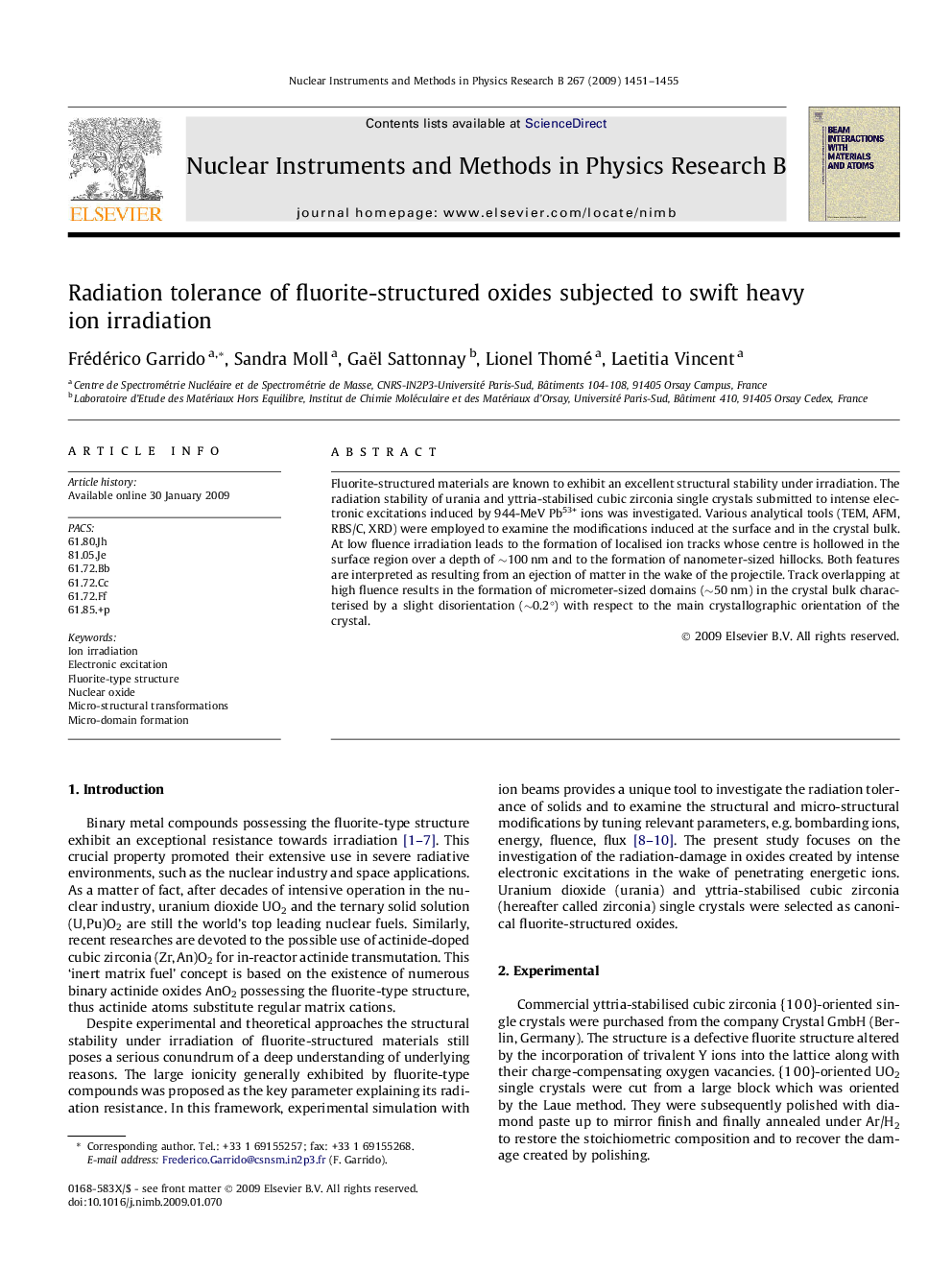| Article ID | Journal | Published Year | Pages | File Type |
|---|---|---|---|---|
| 1683969 | Nuclear Instruments and Methods in Physics Research Section B: Beam Interactions with Materials and Atoms | 2009 | 5 Pages |
Fluorite-structured materials are known to exhibit an excellent structural stability under irradiation. The radiation stability of urania and yttria-stabilised cubic zirconia single crystals submitted to intense electronic excitations induced by 944-MeV Pb53+ ions was investigated. Various analytical tools (TEM, AFM, RBS/C, XRD) were employed to examine the modifications induced at the surface and in the crystal bulk. At low fluence irradiation leads to the formation of localised ion tracks whose centre is hollowed in the surface region over a depth of ∼100 nm and to the formation of nanometer-sized hillocks. Both features are interpreted as resulting from an ejection of matter in the wake of the projectile. Track overlapping at high fluence results in the formation of micrometer-sized domains (∼50 nm) in the crystal bulk characterised by a slight disorientation (∼0.2°) with respect to the main crystallographic orientation of the crystal.
